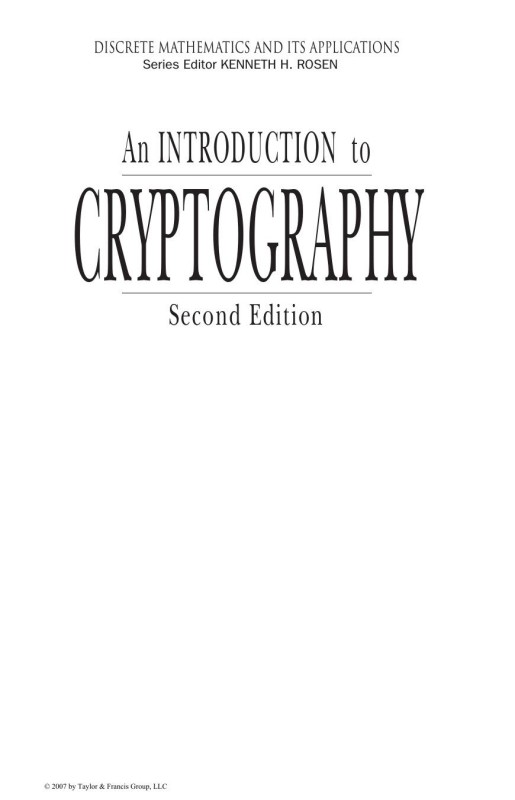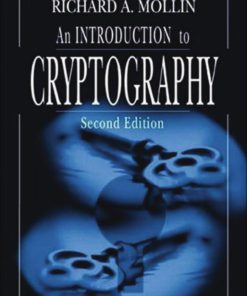An Introduction to Cryptography 2nd edition by Richard Mollin ISBN 1584886188 978-1584886181
Original price was: $50.00.$25.00Current price is: $25.00.
Authors:Richard A. Mollin , Series:Cyber Security [98] , Tags:Mathematics; Combinatorics; Computers; Security; General; Operating Systems; Logic; Discrete Mathematics; Front Matter , Author sort:Mollin, Richard A. , Ids:Google; 9781584886181 , Languages:Languages:eng , Published:Published:Sep 2006 , Publisher:Taylor & Francis , Comments:Comments:Continuing a bestselling tradition, An Introduction to Cryptography, Second Edition provides a solid foundation in cryptographic concepts that features all of the requisite background material on number theory and algorithmic complexity as well as a historical look at the field.With numerous additions and restructured material, this edition presents the ideas behind cryptography and the applications of the subject. The first chapter provides a thorough treatment of the mathematics necessary to understand cryptography, including number theory and complexity, while the second chapter discusses cryptographic fundamentals, such as ciphers, linear feedback shift registers, modes of operation, and attacks. The next several chapters discuss DES, AES, public-key cryptography, primality testing, and various factoring methods, from classical to elliptical curves. The final chapters are comprised of issues pertaining to the Internet, such as pretty good privacy (PGP), protocol layers, firewalls, and cookies, as well as applications, including login and network security, viruses, smart cards, and biometrics. The book concludes with appendices on mathematical data, computer arithmetic, the Rijndael S-Box, knapsack ciphers, the Silver-Pohlig-Hellman algorithm, the SHA-1 algorithm, radix-64 encoding, and quantum cryptography.New to the Second Edition:An introductory chapter that provides more information on mathematical facts and complexity theoryExpanded and updated exercises sets, including some routine exercisesMore information on primality testing and cryptanalysisAccessible and logically organized, An Introduction to Cryptography, Second Edition is the essential book on the fundamentals of cryptography.













